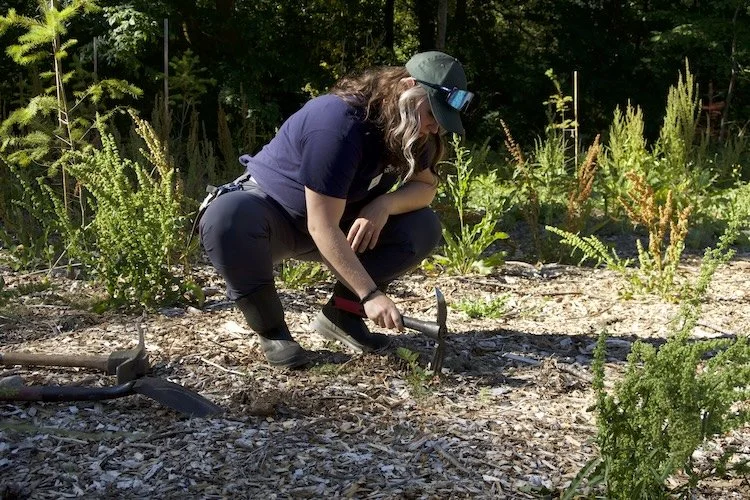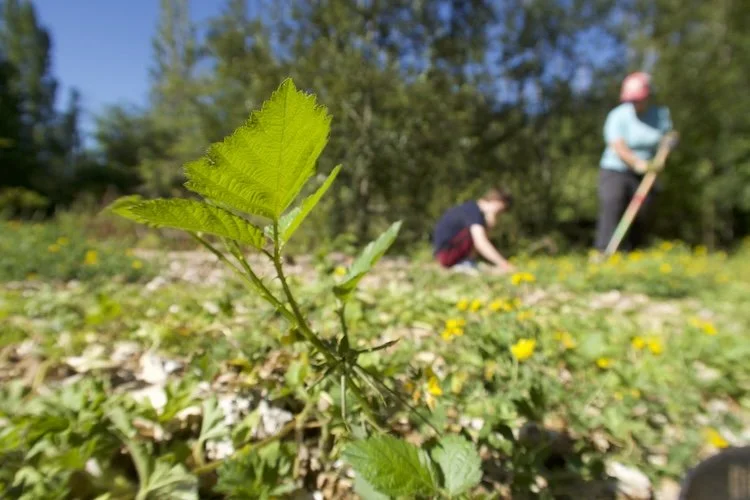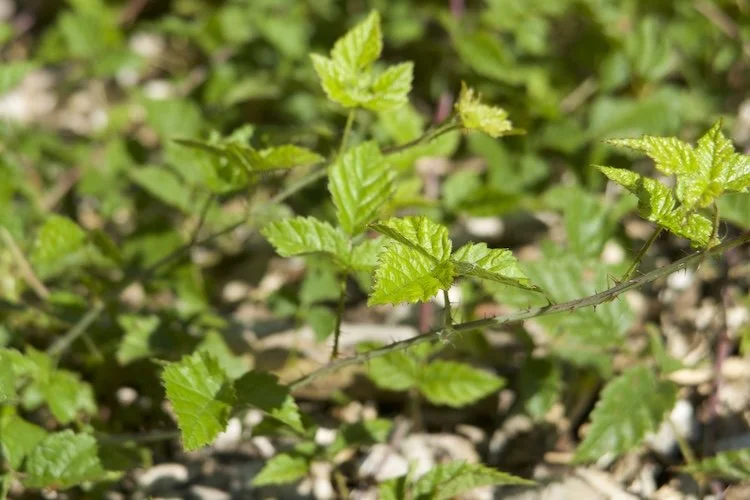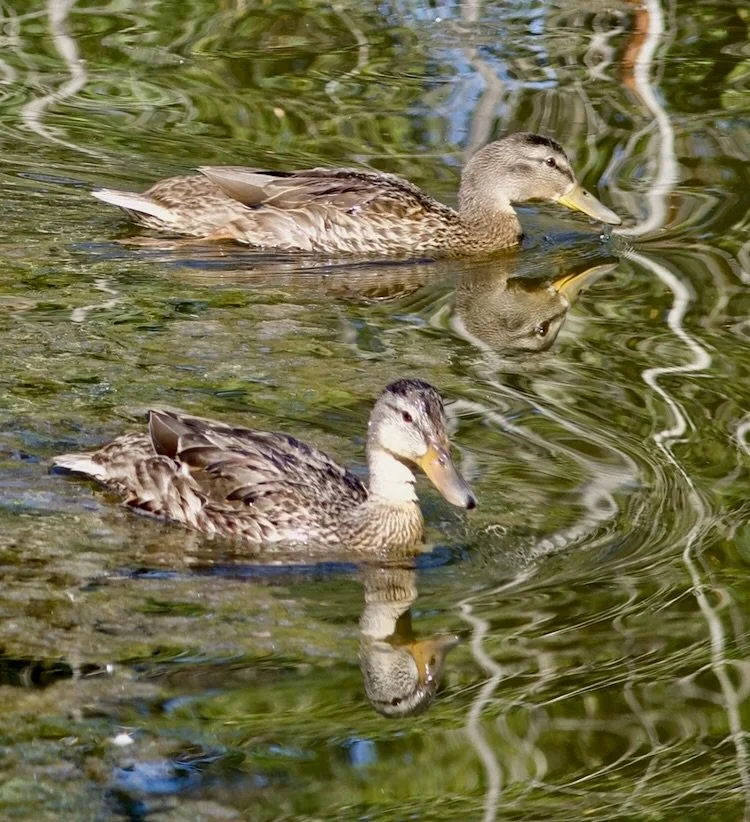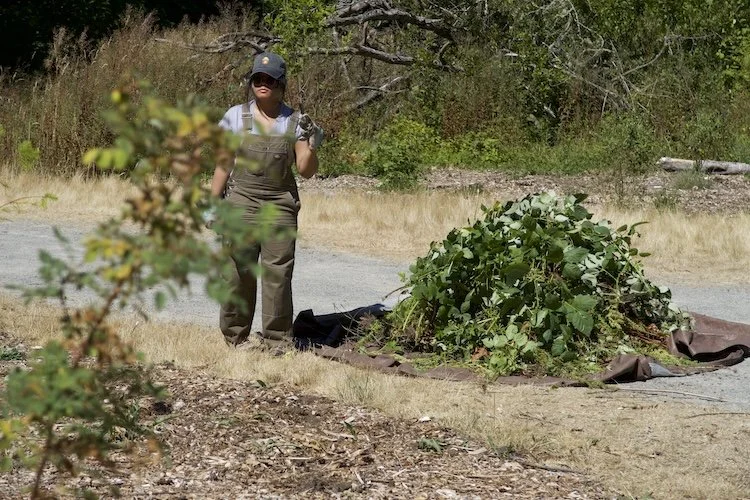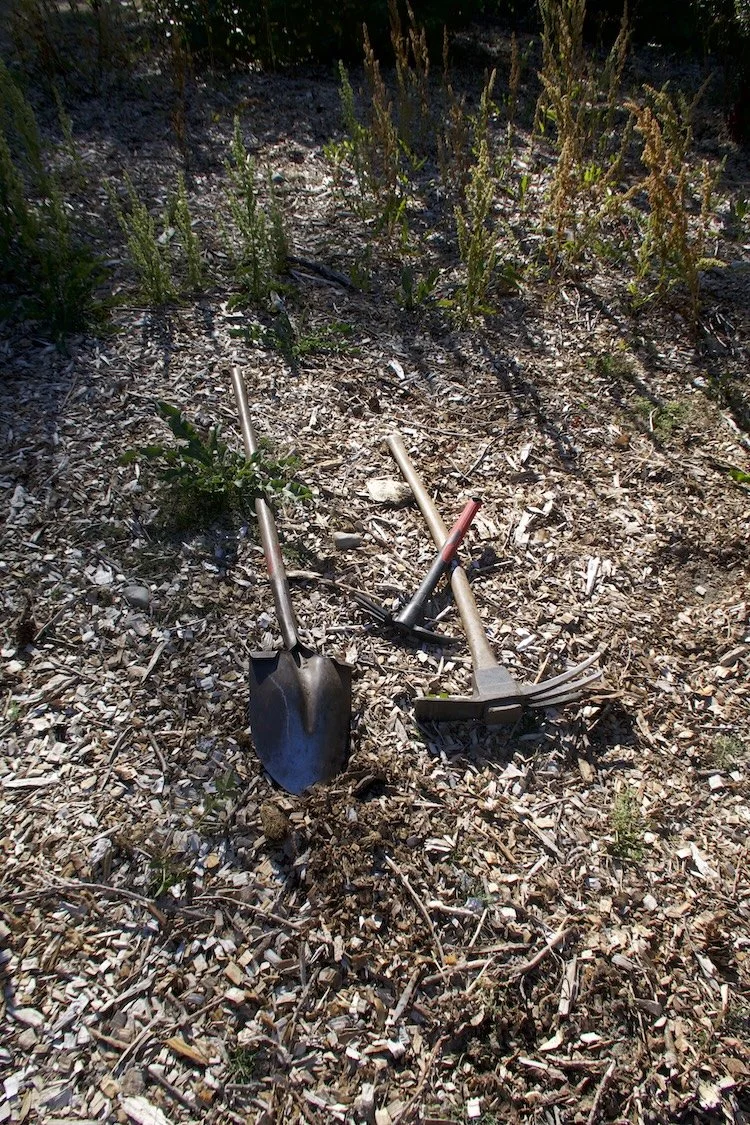Chip in for birds and Tacoma parks
Titlow Park is part of Parks Tacoma and runs along Puget Sound. Cross the railroad tracks and you’re on the beach. The area is home to several species of waterfowl, including the year-round belted kingfishers and the bufflehead ducks who winter in the park’s freshwater ponds. There are also the passerines, hummingbirds, raptors, and others categorized by names I don’t know.
It’s the birds that drew Alex Holmes to the spot. He’s a Parks employee and volunteer who gets groups of strangers to show up at 9 a.m. on a Saturday once a month. Today was July’s meeting date.
Holmes, along with Haley Stephens and seven additional volunteers, including myself, met in the parking lot, some with sunhats already on. The group, called the Grit City Birders Habitat Restoration Crew, was there to implement Holmes’s vision, a project that began nearly a year ago. The goal: to help birds by restoring habitat with native plants. By focusing on vegetation, the crew can help shape the surroundings and increase the likelihood that a portion of the park will eventually develop into old growth, or end-stage, forest, which is a state of equilibrium among species.
Alex Holmes removes a lot of weeds from the restoration site.
A park guide, Holmes leads the restoration crew, but not in his official capacity as a park employee. Here, he’s a park steward, a volunteer who sets out with an improvement idea for a park. In return, the park provides support. Holmes gets his help from an official urban habitat restoration specialist. That’s Haley Stephens.
Holmes, who leads educational birding activities as part of his regular day job, said he noticed invasive plant species while acting as a guide in the parks. With dwindling suitable habitat, affected in part by shifts in flora, and dwindling numbers of birds, Holmes thought it important to lead by example, so he decided to volunteer to do more for the environment.
As a volunteer, Holmes is learning more about environmental conservation, but he also brings his regular work with him. As he led today’s volunteers to and from the restoration site, he pointed out the tree where you’re most likely to see an osprey. As we passed one of ponds, he called attention to the kingfishers as they swooped across the water. Spend a few hours volunteering with him or attending one of his bird walks and you’ll probably learn something about birds you didn’t know before.
But birding, conservation, and habitat restoration isn’t just about education; it’s about personal connection. Holmes knows this and that’s why he volunteers.
“It’s important to make the environment personal,” he said.
Haley Stephens demonstrates proper tool use for Himalayan blackberry removal.
That personal feeling definitely happens when you’re on your hands and knees digging around complicated root systems.
One of the main objectives of the Grit City Birders has been the removal of Himalayan blackberry, which has taken over large sections of the park.
The work can feel like a fight. The roots are long; the vines are long; the thorns will stab you right in the face if you let them. Trust me. I know. It’s also extremely satisfying and a bit of a personal triumph to see an area that was once overwhelmed with large thorny canes fill in with Washington’s native trailing blackberry, a smaller berry shrub that doesn’t grow as high off the ground.
It’s also nice to begin to see some familiar faces when you join a group of like-minded people to work on something together. Part of the appeal of work parties is the collective effort and accomplishment.
Stephens, a conservation biologist, shared similar sentiments. She researches natural areas and native plants to develop restoration plans. While she has a lot of ideas on how to best restore and conserve habitat, she also talked a lot about human communities.
Work parties are particularly great for adults who are at a time in life when it becomes a little more difficult to make friends.
On the one hand, parks provide homes for birds, insects and all sorts of other small animals; on the other hand, they’re also great places where people can connect and reconnect with each other.
As Stephens said: “Everybody deserves safe spaces and green spaces.”
That means birds and people.
Invasive Himalayan blackberry tends to grow upward.
Native trailing blackberry tends to grow along the ground.
Tips to restore bird habitats:
1. Remove invasive plant species
Without natural ecosystem checks, invasive species damage habitats by disturbing balance. By removing them, space and resources can be reallocated for native plants, which have evolved alongside the native insects, birds, and other flora and fauna, creating a healthy, balanced ecosystem.
2. Restore native species
Removing invasive plants is important, but replacing them is equally important. There are two main reasons for that. Firstly, invasive plants like blackberries have a function. They provide a food source and safety among the brambles for nesting or perching. Eliminating invasive plants and leaving a barren landscape can be detrimental, particularly for smaller animals. Secondly, removing invasive species doesn’t automatically lead to the return of native flora. In Washington, Himalayan blackberry just comes back and fills the void. Adding native species helps the natural processes recover better.
3. Make room for small animals
Small animals such as insects and rodents have important ecosystem roles. They’re necessary for a complete range of biodiversity that goes all the way up to apex predators like certain owls, hawks, and falcons. To help support small animal life in the park’s urban area, the volunteers built habitat piles back in April. The piles, composed of stones, logs, twigs and plant debris, provide refuge to small animals where they can nest or escape predators. The anticipated effect is healthier populations of insects and small mammals that can support healthier populations of larger birds.
4. Patch the habitat
Habitat loss and habitat fragmentation are some of the drivers of declining animal populations and species. You can have an immediate impact right in your backyard by planting native plants and avoiding pesticides and herbicides. You can also help birds by advocating for more green space in cities and municipalities and by being aware of local development with particular attention toward plans that involve wetlands, grasslands, or forests.
5. Volunteer at a city or regional park
If you’re in Tacoma, Washington, you can volunteer with conservation, clean up, or other projects through the Parks Tacoma Chip In! program. Find an event at a park near you or request one. If you have a group that’s interested in volunteering, just let the Parks know, and they’ll get you hooked up.
Have a story idea?
Connect and let me know what kind of story you want to hear or if you know of a story that needs to be told.
Tree limb with moss and lichen


